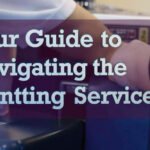
- comelyweb@gmail.com
- Compose Job Application
- August 23, 2025
- No Comments
Job Application Email: Your Digital Handshake
Job hunting can feel like shouting into a void. You polish your resume to perfection, you create a compelling LinkedIn profile, and you spend hours searching for that perfect role. Then, you hit a wall: the application email. It’s that blank screen staring back at you, a deceptively simple gateway between you and your next career move.
This is not just a formality. It’s not just a vessel to carry your resume. Think of your application email as your digital handshake, your elevator pitch, and your first impression—all rolled into one. In a sea of generic messages, a well-written email has the best chance of being seen, remembered and shortlisted. This is your chance to show that you’re not only qualified, but also professional, attentive, and genuinely interested.
This guide will walk you through every step of writing a job application email that not only gets opened, but also lands you an interview. We’ll go beyond basic templates and into strategies for building real human connection.
Table of Contents
TogglePart 1: Laying the Groundwork – Before You Type “Dear…”
You wouldn’t build a house without a blueprint. Don’t write your application email without doing your homework first. This preparation step is what separates a good application from a great one.
“To:” Understanding the field: Who are you actually writing to?
The first step is to know your audience. A generic email sent to a generic address is easy to ignore.
- Example scenario: A designated contact person. This may be listed in a job posting (for example, “Send applications to Jane Doe”). If it isn’t, your mission is to find it. Use LinkedIn to search for a company and job title. Find a hiring manager, head of department, or talent acquisition specialist. Searching for names adds a powerful layer of personalization.
- General scenario: A generic email address (for example, jobs@company.com, hr@company.com). In this case, your subject line and opening line become even more important to get attention.
The art of complex research
A little research goes a long way. Spend 15-20 minutes on the company’s website, their “About Us” page, their blog, and their social media feeds.
- Understand their mission and values. What do they care?
- Find the latest news. Have they just launched a new product? Win an award?
- Understand the context of the role. How does this position fit into the larger goals of the team or company?
It’s not just for show. This information fuels your personalization, allowing you to speak their language and show genuine interest.
Consolidate your assets
Have everything ready before you start writing:
- Your prepared resume: Saved as “[Your Name] – Resume – [Job Title].pdf” PDF is non-negotiable; This preserves your formatting.
- Your cover letter (if applicable): Saved as “[Your Name] – Cover Letter – [Job Title].pdf”. Even if the email itself will serve as your cover letter, it is often expected to be a formal document.
- Portfolio/Work Samples: If relevant, create links or save files appropriately.
Part 2: Crafting the Components of a Winning Email
Now, let’s break your email down into pieces. Every element, from the subject line to your signature, serves a purpose.
Subject line: Your make-or-break first look
This is the most important real estate in your entire application. Recruiters’ inboxes are battlegrounds. Your subject line is your flag. It must be clear, professional, and include important information.
Formula for success:
Job Application – [Your Name] – [Key Qualification]
Why it works:
- “Application for [job title]”: immediately states its purpose. Many companies use automated filters to sort emails based on job titles.
- “[Your Name]”: Makes it easier to find you later.
- “[Key Competency]”: This is the secret sauce. It adds a hook. (For example, “Application for Marketing Manager – Jane Doe – 8+ years in SaaS growth”).
Other strong examples:
- [Job Title] Application: [Your Name]
- Applicant for [Job Title] – [Your Name]
- Reference: [Your Name] for [Job Title]. (Only if you are actually referred!)
What to avoid:
- Leave it blank. (A quick ticket to the trash can.)
- Vague subjects like “job application” or “resume”.
- Using overly casual or enthusiastic language such as “hire me!” or “the best candidate for your job”.
Opening salutations: Setting the right tone
How you start your email matters. Always aim for a designated contact.
- Best: Dear Ms. Du, or Dear Jane Doe, (if you know their name).
- Good: Dear Hiring Manager, or Dear [Department] Team, (A safe, professional fallback).
- Avoid: Who cares, (feels old and impersonal) or Hey! (very comfortable)
Email Body: Your Story in a Nutshell
This is where you make your case. Your goal is to be concise, compelling, and easy to read. Aim for 3-4 short paragraphs.
Paragraph 1: Hook
State immediately why you are writing and convey genuine enthusiasm.
- “I am writing to express my deep interest in the [job title] position at [company name], which I discovered on [platform where you saw the ad]. I have long admired [company]’s work in [specific field/project], and I am excited about the opportunity to contribute to your team.”
- If you have a reference, lead with it! “I was delighted to hear from my former colleague, [referrer’s name], about the [job title] opening at [company name].
Paragraph 2: The value proposition
This is your mini elevator pitch. Don’t just list your skills; Connect them directly to the needs of the role. Pick 2-3 key competencies from the job description and combine them with a short, powerful accomplishment.
- *”The job description emphasizes the need for someone who can manage cross-functional projects. In my previous role at [previous company], I successfully led a team of designers and developers to launch a new customer portal, which resulted in a 15% reduction in support tickets within the first quarter.”*
- Use keywords from the job ad! It shows that you have read it carefully.
Paragraph 3: Culture fit and enthusiasm
Briefly explain why you are particularly interested. This Use the company’s own research.
- “Beyond my qualifications, I am particularly drawn to [Company Name]’s commitment to sustainable practices, as highlighted in your most recent annual report. My passion for aligning business goals with environmental responsibility assures me that I will be a strong cultural fit.”
Paragraph 4: Call to action and closure
Clearly describe the next step and thank them for their time. Keep it polite and confident.
- “My resume is attached for your review. I look forward to discussing [Skill] and how my experience at [Skill] can benefit [Company Name] and would welcome the opportunity to interview at your convenience. Thank you for your time and consideration.”
Conclusion and signature
Finish as professionally as you started.
- Closing: best wishes, Sincerely, or Hello,
- Signature:
- Your full name
- Phone number
- E-mail address
- LinkedIn profile URL (make sure it’s updated!)
- Link to online portfolio (if relevant)
Part 3: Final Checks – Don’t trip the finish line.
You wrote it. Now, complete it.
Proofread like your career depends on it (it does).
Typos and grammatical errors indicate carelessness. They are the fastest way to get a discount on your application.
- Read it aloud to catch the odd phrase.
- Use a tool like Grammarly or Hemingway Editor.
- Ask a friend or family member to read it.
Send all important tests.
Send it to yourself before sending it to the company. Check:
- Formatting: is everything ok Do the links work?
- Attachments: Did you actually attach the resume and cover letter? This is the most common mistake. Triple check.
Frequently Asked Questions: Your Job Application Email Questions, Answers
Q: Should I write the cover letter in the body of the email or as a separate attachment?
A: It depends on the instructions. If a job posting says “include a cover letter,” it often means in the body of the email. If it asks for a cover letter “as an attachment,” do so. If it’s not clear, a safer approach is to write a short, compelling pitch in the body of the email (as described above) and attach a more formal, detailed cover letter document.
Q: What time of day is best to send a job application email?
A: Studies suggest that Tuesday through Thursday, during business hours (eg, between 9 AM and 11 AM in the recipient’s time zone), are generally good. Avoid late nights, weekends and Monday mornings when inboxes are the most cluttered.
Q: What if I don’t hear back? Is it OK to follow up?
A: Yes, but be patient and strategic. Wait 1-2 weeks after the application deadline (or after you apply if no deadline was given). Send a short, polite follow-up email. Restate your interest, mention the job title and application date, and offer to provide any additional information. Don’t bother them.
Q: How long should an email be?
A: Make it scannable. Ideally, your email should be around 150-250 words. If you are listing major accomplishments, use short paragraphs and bullet points. The goal is to provide a highlights reel, not your entire life story. The reader should be able to understand your value in less than 30 seconds.
Q: I am applying for a creative role. Could my email be more creative?
A: Of course! For roles in design, marketing, advertising, etc., your application email is an opportunity to showcase your skills. You can have a slightly more attractive subject line or add clean, professional design elements to your email signature. However, always make sure it stays professional and doesn’t compromise readability or look unprofessional in an email client.
Conclusion: Your email, your opportunity
Writing a job application email is an art that combines strategy, professionalism and personal flair. This is your first, and sometimes only, opportunity to make a connection with a future employer. By going beyond a simple template and investing time in research, personalization, and careful crafting, you turn a simple message into a powerful personalized marketing tool.
Remember, you’re not just a list of skills on a resume. You are a potential solution to the company’s needs. Your application email is the lens through which they will view your entire candidacy. Make it clear, make it compelling, and most importantly, humanize it. Now, take a deep breath, proofread that draft one last time, and hit ‘send’ with confidence. Your next great opportunity awaits on the other side.





